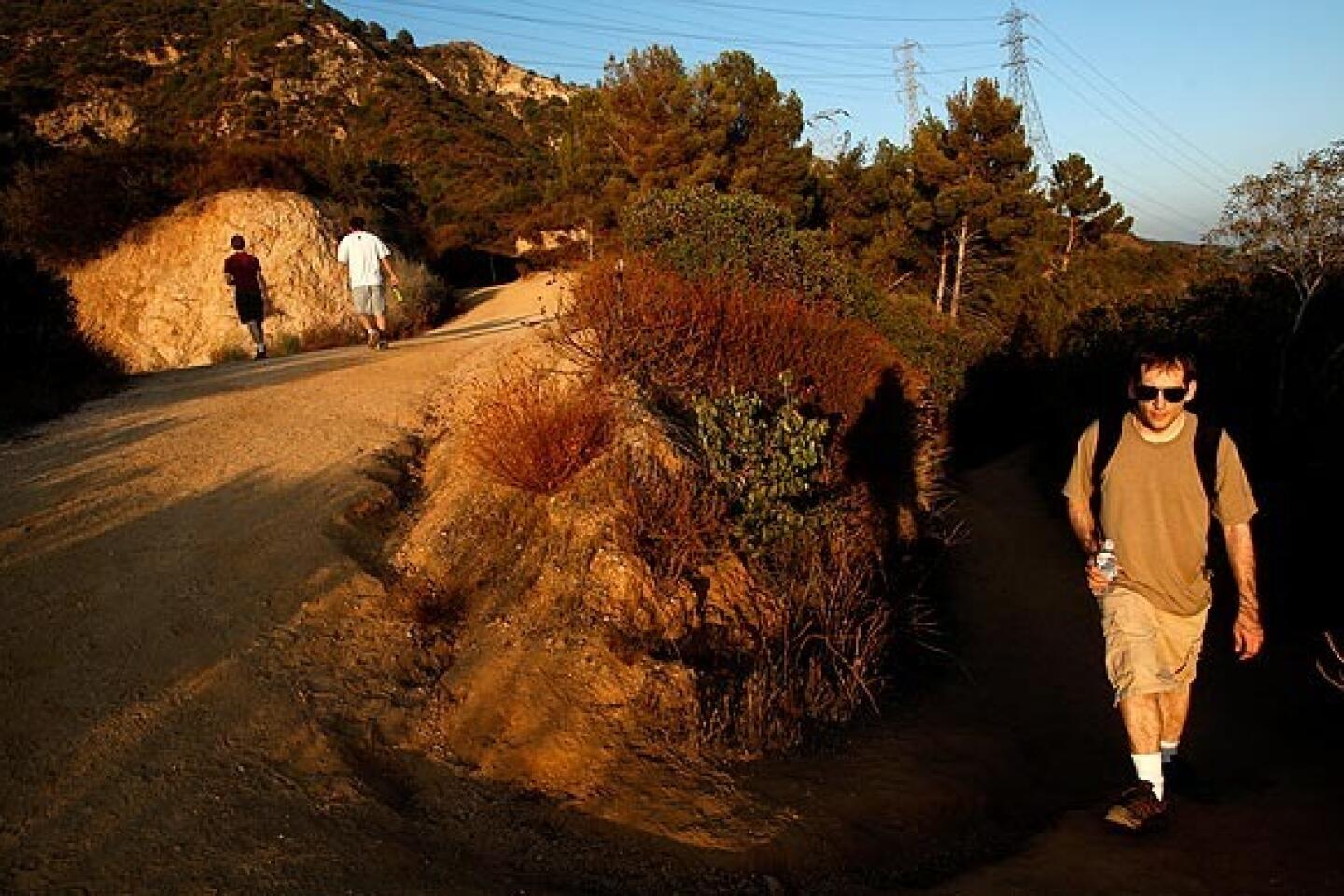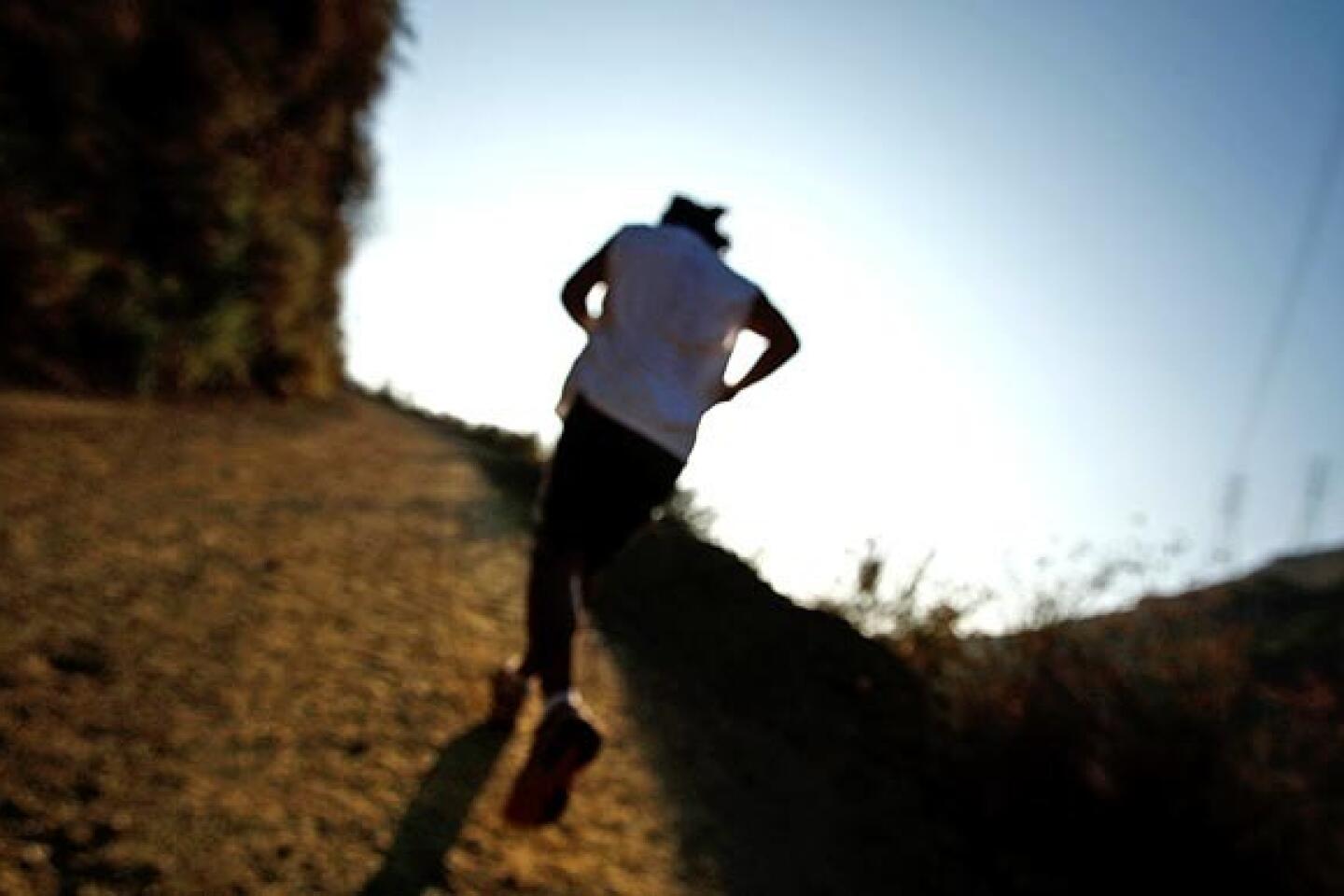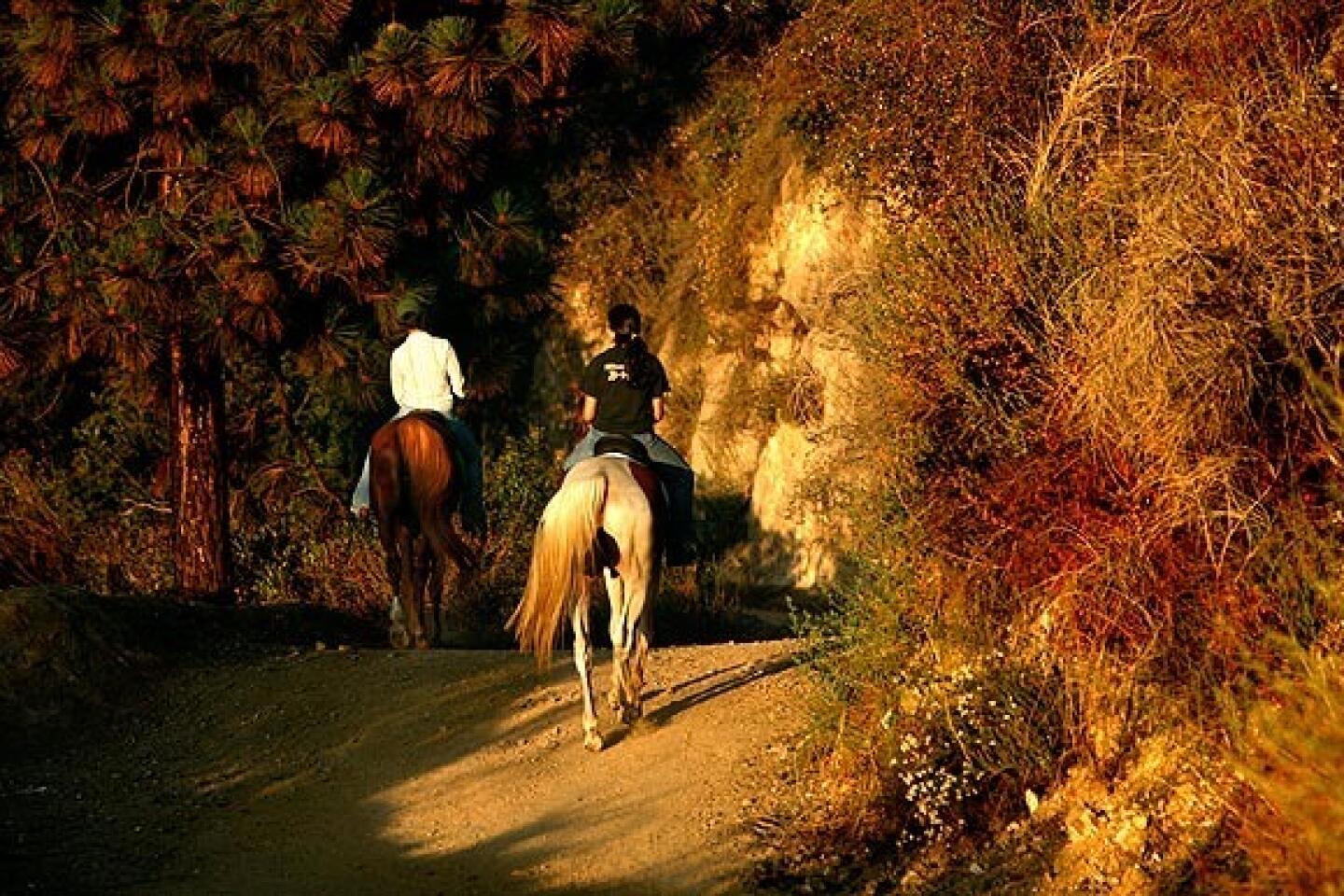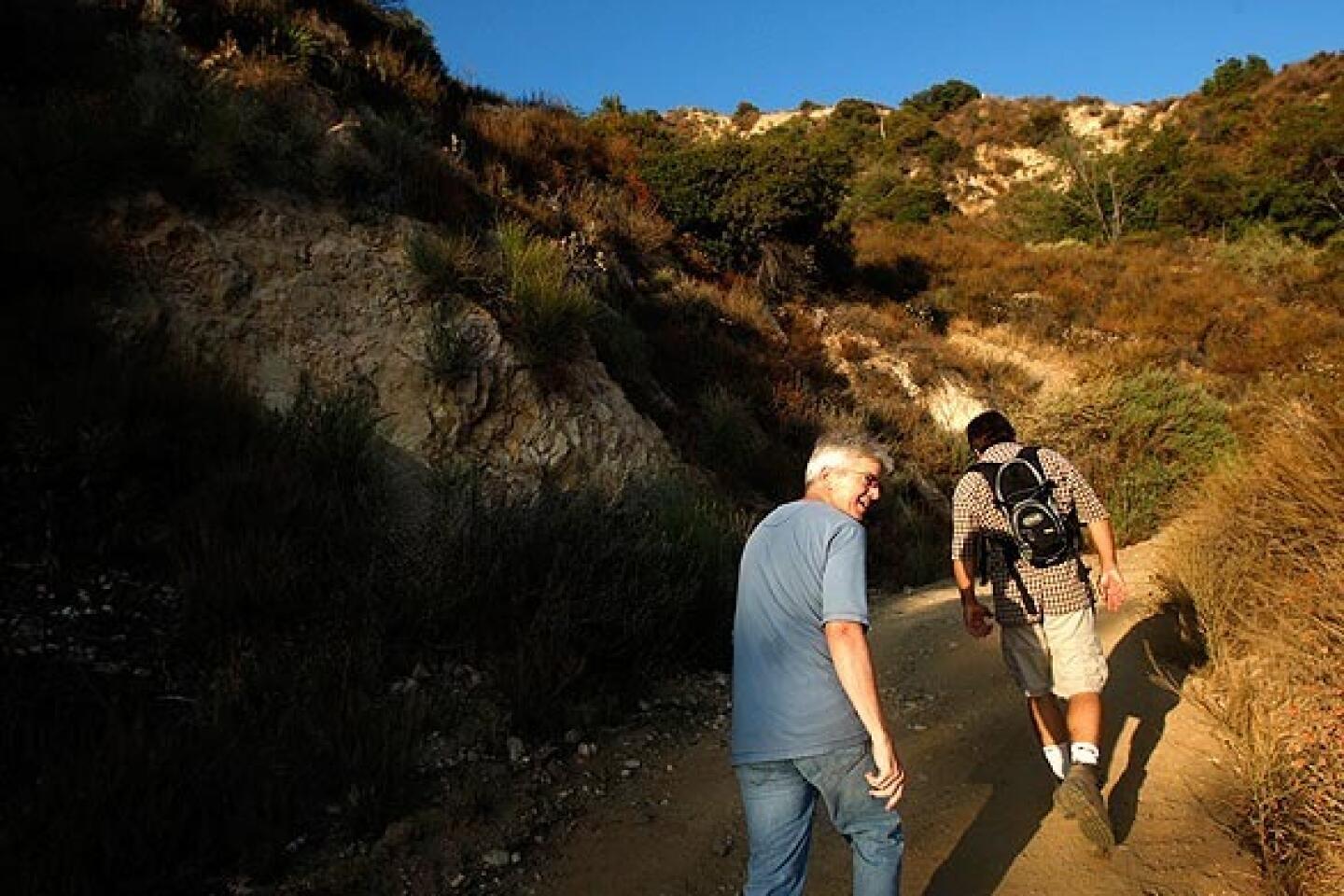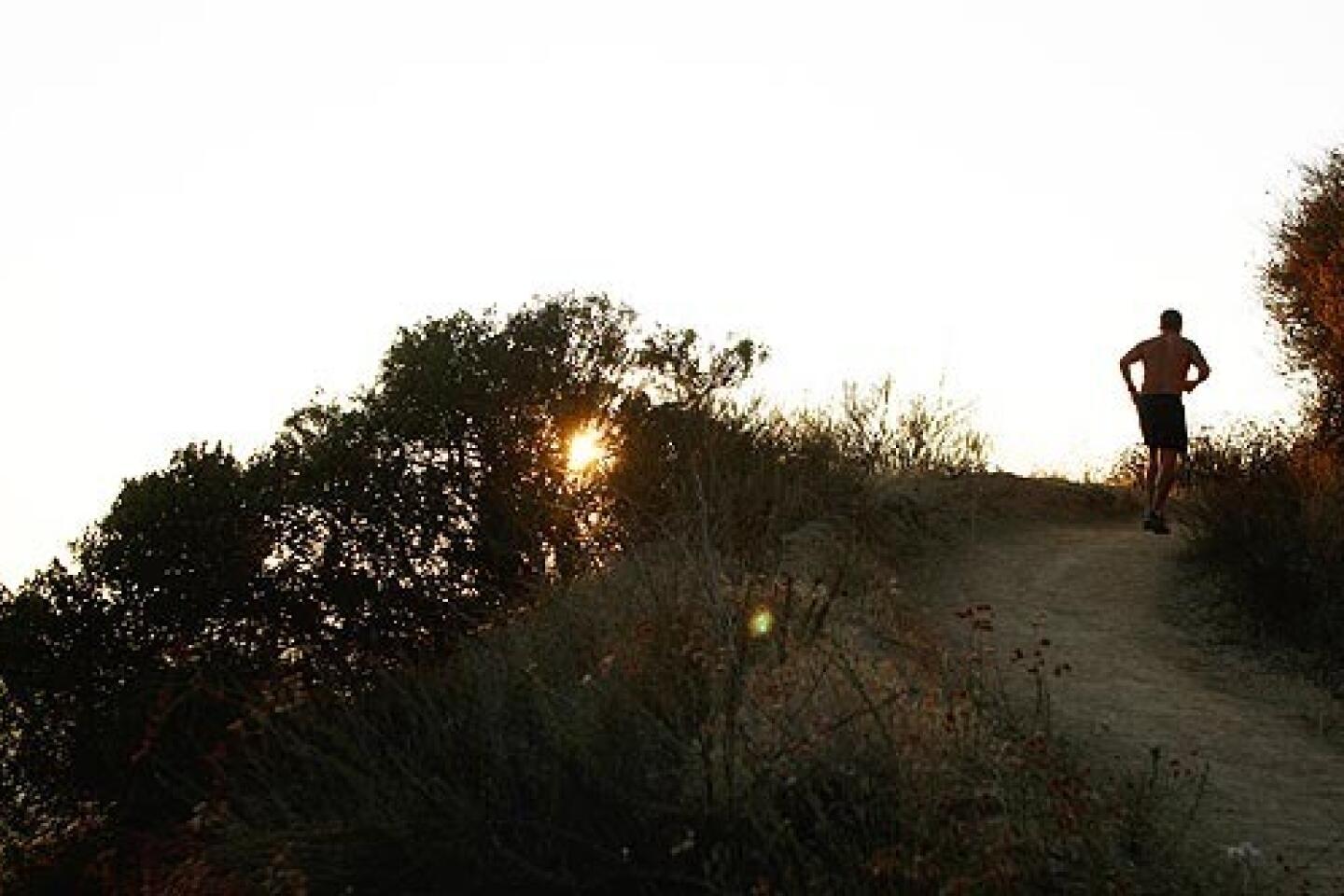Mt. Wilson road, closed since ‘05, could reopen soon
For decades, outdoor enthusiasts would trudge the nearly nine-mile climb through the craggy foothills above Pasadena, following the same worn trail that workers used to haul the large telescopes to the Mt. Wilson observatory a century ago.
But rain-triggered landslides buried portions of the popular path, and the Mt. Wilson Toll Road was closed to the public in 2005. Now, after six months of construction and roadwork, the historic route is close to reopening.
“It’s a wide open road and you don’t have to worry about poison oak or unexpectedly running into a rattlesnake,” said Altadena resident Alissa Motta, who is among hikers who have already enjoyed the restored path despite the “closed” signs that remain posted at the trail head in Altadena.
The path to the summit of Mt. Wilson is more road than trail, and at some points its width stretches to 14 feet. It’s a steep incline with little shade, the scenery is stark and the road dusty, but on a clear day hikers are treated to a panoramic view of the San Gabriel Valley.
Motta, 39, said she listens to lectures from her acupuncture class on her iPod when she makes the climb, or spends the hike tromping after her 6-year-old son as he runs gleefully ahead. “It’s good for kids because you don’t have to worry about them falling into a precipice,” Motta said.
Kevin Johnson, assistant chief of the Los Angeles County Fire Department’s Forestry Division, said that at least one more area along the route needs to be cleared before the road is officially reopened, but he hopes the project will be finished this weekend.
The repair, funded with a $1.4-million grant from the Federal Emergency Management Agency, was performed by a crew of three who used backhoes and bulldozers to move tons of rocks and dirt deposited by the landslides. Some of the rocks were loaded by hand into wire baskets known as gabions that were used to fortify the ground beneath the start of the trail.
“At the end of the day, my body was exhausted,” said Jesse Gonzalez, 22, one of the workers. “Now that I look at the work I did, I’m impressed. A lot of people walked by and thanked us for what we’re doing. It made me feel good.”
The road has been cleared nearly to Henninger Flats, about three miles up the trail, where deer roam, there is a campground and the Los Angeles County Fire Department operates a tree nursery. On the site is a small museum where black-and-white photos are displayed of early days on the mountain when the summit was reached by mule or horse-drawn buggy.
It was the founding of the Mt. Wilson Solar Observatory by George Ellery Hale at the turn of the 20th century that forced what had been a narrow trail to be widened first to 10 feet, then 12. The first telescopes were carried on the backs of burros in pieces that weighed hundreds of pounds, according to papers written by Walter S. Adams, who helped Hale establish the observatory.
“The general public found its way comparatively little to Mt. Wilson at this time, difficulties of transportation operating to limit our visitors,” Adams wrote in his 1947 account of the early reaction to the observatory.
“Occasionally some exceptional event, especially if featured in the press, would bring a throng, and we were overrun at the time of the return of Halley’s Comet in 1910, when more than a few seemed to anticipate the end of the world, and apparently wished to be in close touch with those who were presumed to have inside knowledge of the various stages of catastrophe.”
Vehicles were charged 50 cents to use the road, which was owned by Mt. Wilson Toll Road Co., and visitors could spend the night at the summit in cottages or a hotel. In the 1920s, automobiles made their way up the mountaintop and drivers were said to hold races that wound around the chaparral-covered cliffs.
Today, besides hikers, only county and service vehicles are allowed on a path that the public continues to hold in high regard.
“There’s the idea now that you buy food locally. I think the same about hiking,” said 62-year-old Simon Burrow of Pasadena, who was disheartened by the closure of the road and two years ago started a blog devoted to it.
For some, the reopening is a measure of lost time. Seth Howell, 52, once rode his gray hybrid mountain bike up the road three or four times a week. Now the Altadena resident is not so sure about pedaling back to his favorite trail more than four years after he stopped.
“It takes a while to get in shape to do it,” Howell said. “I may ease back into it, but I’m not as young as I was when the road washed out.”
More to Read
Start your day right
Sign up for Essential California for news, features and recommendations from the L.A. Times and beyond in your inbox six days a week.
You may occasionally receive promotional content from the Los Angeles Times.
